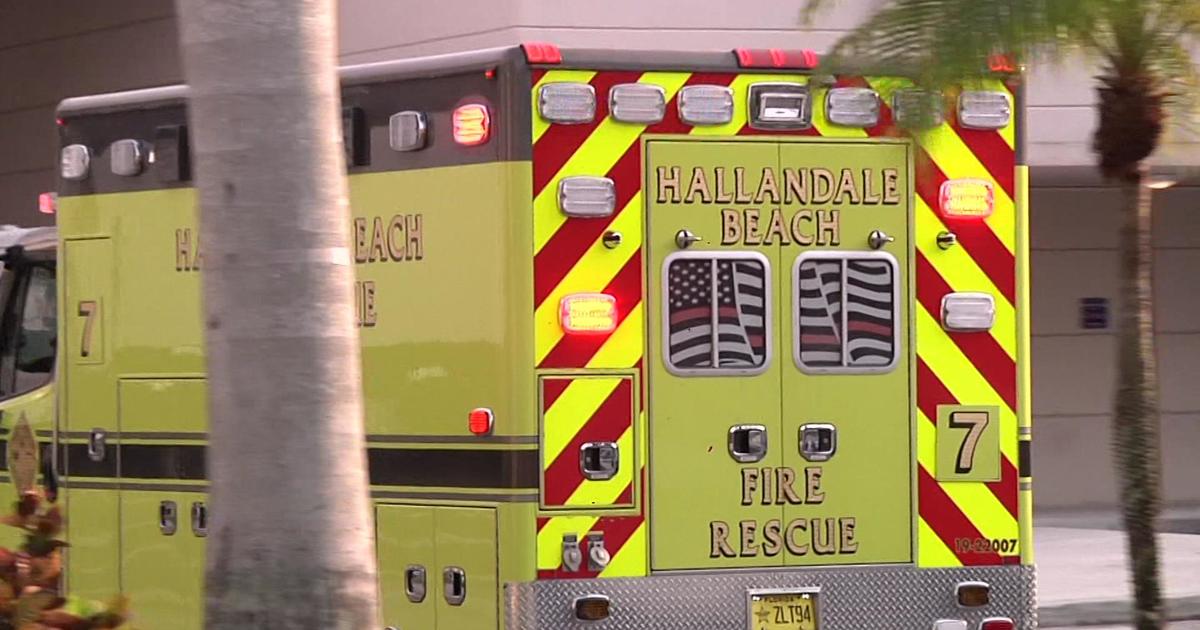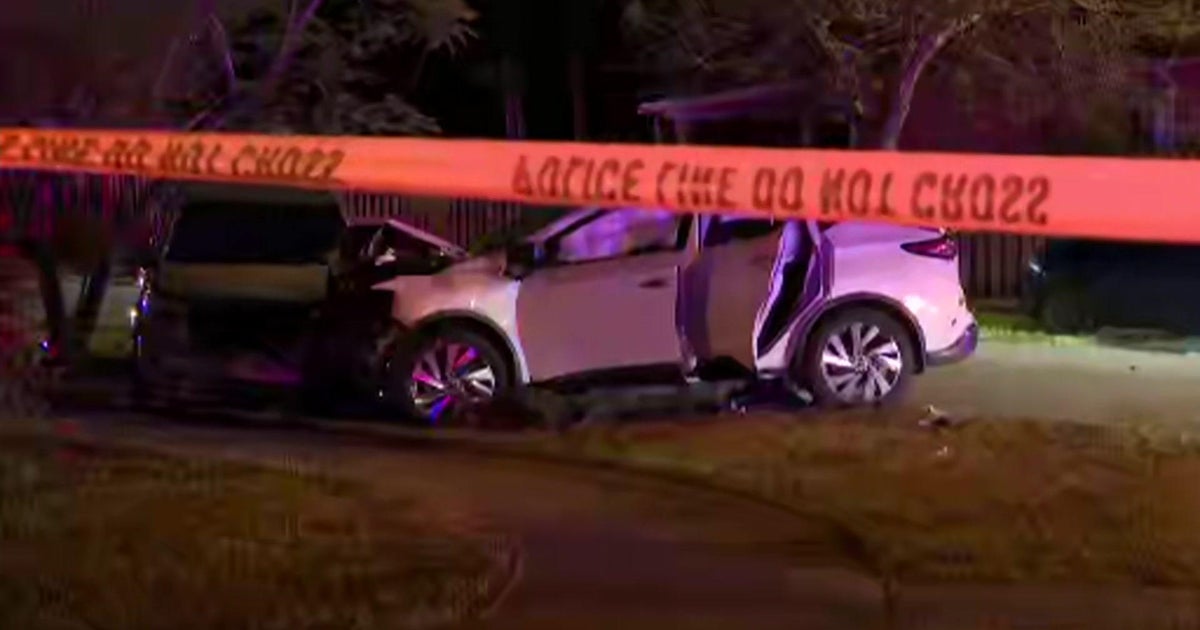Warning Alarm Broken On Runaway Bus That Killed Driver
Follow CBSMIAMI.COM: Facebook | Twitter
MIAMI (CBSMiami) -- On December 5, at approximately 4:30 pm, Miami-Dade County Transit driver Laquito Alvin steered her bus into the Northside Depot on 79th Street and Northwest 32nd Avenue. It was the end of her route, which had taken her from the Northside Depot to Mercy Hospital and back, and she would have just a few minutes to go to the bathroom before starting the circuit all over again.
A dozen or so passengers stood up, with several trying to get out the back door, before discovering the door was broken and they would have to go out the front.
CLICK HERE To Watch Jim DeFede's Report
When the last passenger stepped off the bus, Alvin, a part-time employee who had been with the county for about six months, left the motor running, gathered her belongings and went out the front door. She then walked around the front of the bus to the driver's side window, where she reached through the opening and pulled a silver lever to close the doors and secure the bus while she stepped away.
As soon as she did, the 40,000 pound bus began to move.
Initial indications are that Alvin forgot to set the parking brake and once the doors closed the bus was free to roll.
Alvin desperately tried to stop her bus but was unable to. As the bus picked up speed, it jumped the curb, while Alvin held on to the steering wheel. The bus then veered to the left and sideswiped another county bus that was parked. Alvin, the 36-year-old single mother of three, was caught between them and run over by her own bus. She died on the scene.
While Alvin appears to have made an error in not engaging her brake and allowing the bus to take off, it is sadly not an uncommon one. The county even has a name for it. They refer to them as 'Runaway Buses.'
In the twelve months prior to Alvin's death, CBS4 News has learned there were ten other incidents of runaway buses. Those incidents never made the news because they only resulted in property damage. But the potential for more serious injuries is evident. In 2013, for instance, a bus driver in Washington D.C. was killed by a runaway bus.
Since 2003, the county has issued dozens of memos to its drivers, warning them to be sure to set the parking brake before leaving the bus. They even post stickers on the windows. But the accidents continue to happen.
Approximately seven years ago, the county began installing a warning system in their buses. Commonly referred to as a "seat alarm," it's designed to prevent a driver from leaving their bus without first engaging the parking brake. If a driver gets out of their seat without the brake in place, the bus's horn repeatedly goes off.
When investigators boarded Alvin's bus after the accident, they found the cable for the seat alarm tied in a knot and left unconnected and dangling behind her seat.
Melvin Gonzalez, chief union shop steward in the maintenance division of Miami-Dade Transit, said when he stepped onto the bus after the accident to determine what had went wrong, he said he was heartbroken to see those wires dangling.
"I said, look at that," Gonzalez, who has been a county mechanic for more than 20 years. "The first thing that came to my mind was what a shame, what a shame."
He said if that seat alarm had been working he has no doubt she would be alive today.
"I don't think anybody can tell you no," he said. "Because there is no way you are going to get up out of your seat. As soon as you get out of the seat the horn just starts blowing and the lights start flashing."
Transit officials new right away they had a serious problem. Memos obtained by CBS4 News show that on December 9, four days after Alvin's accident, an urgent notice went out to all bus garages instructing supervisors to immediately check to see if the seat alarms on the other buses were working.
The results were staggering.
Out of the 456 buses with seat alarms, supervisors found the warning systems broken on 421 of them. Gonzalez said he is not surprised that more than 92 percent of the alarms weren't working. He said budget cuts and staffing shortages have left maintenance crews concentrate on fixing problems that keep the buses from running.
"The shops, the supervisors have to pick and choose what they can repair in order to get the bus in the revenue service," he said, "because the name of the game is getting the bus out in the revenue service."
In an interview with CBS4's Jim DeFede, Gonzalez said the county's priorities are clear.
"We have an aging fleet and it's like everything else the older it gets - you fix one thing over here and another thing breaks over there," he explained. "And with deferred maintenance stuff just keeps piling up, so what they focus on is the stuff that keeps the bus rolling. That's why they look so ugly sometimes going down the road."
Gonzalez said he worries every day he's putting buses that are unsafe on the road.
"Oh for sure," he said. "Yes, obviously if we're putting a bus out there with no seat alarm, that's a problem."
Miami-Dade's Deputy Transit Director Hugh Chen said he was reluctant to discuss the circumstances of Alvin's accident while police are in the midst of its investigation, but he made it clear that anytime there is an instance of a runaway bus it is the driver's fault.
"There is an extensive amount of training that we provide," he said.
Drivers are taught to engage their parking brakes, are repeatedly reminded to do so with memos, and are warned that if they allow their buses to runaway they can face severe penalties up to and including termination.
Clarence Washington, the president of the Transportation Workers Union, said he believes the reason Alvin didn't just jump clear of the bus and instead held on and tried to stop it, is because she was afraid she would lose her job.
"She was thinking of one thing and one thing only, I need this job and they've already told me if I get a runaway bus they're going to fire me," he said.
Chen said he was aware that a seat alarm survey of the buses was ordered after the accident. But when CBS4 spoke to him more than seven weeks after the survey had been completed he said he didn't know the results. CBS4 News had to provide them to him.
His reaction to 92 percent of the buses not having working seat alarms: "Certainly it points to a multitude of things."
He again blamed the drivers for not reporting the broken alarm system and also placed the blame on mechanics for not catching it. He said drivers perform daily pre-trip inspections on their buses. CBS4 News obtained a copy of the inspection form, detailing nearly 60 items the driver is required to check. But the list does not include the seat alarm.
Gonzalez said at the time of Alvin's accident the maintenance department had 47 open mechanic positions and his crews can barely keep the buses on the road.
County memos also reveal another possible reason why transit officials let the seat alarms fall into disrepair: The cost. One memo notes how "pricey" the parts for the seat alarm cost. A new sensor pad costs $280. The alarm module is $490.
Chen said the county is not required to provide or maintain the seat alarms and they are merely a warning device.
Asked if he believed Alvin would be alive today if the seat alarm on her bus was working, he said: "I can't answer that, I don't know what's going through her mind."



